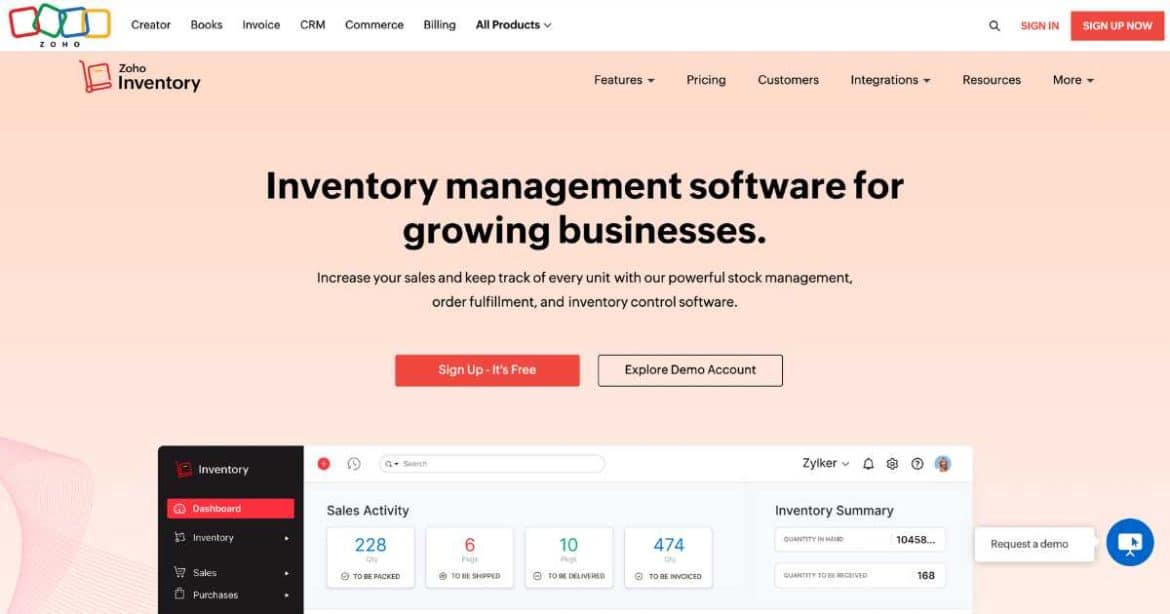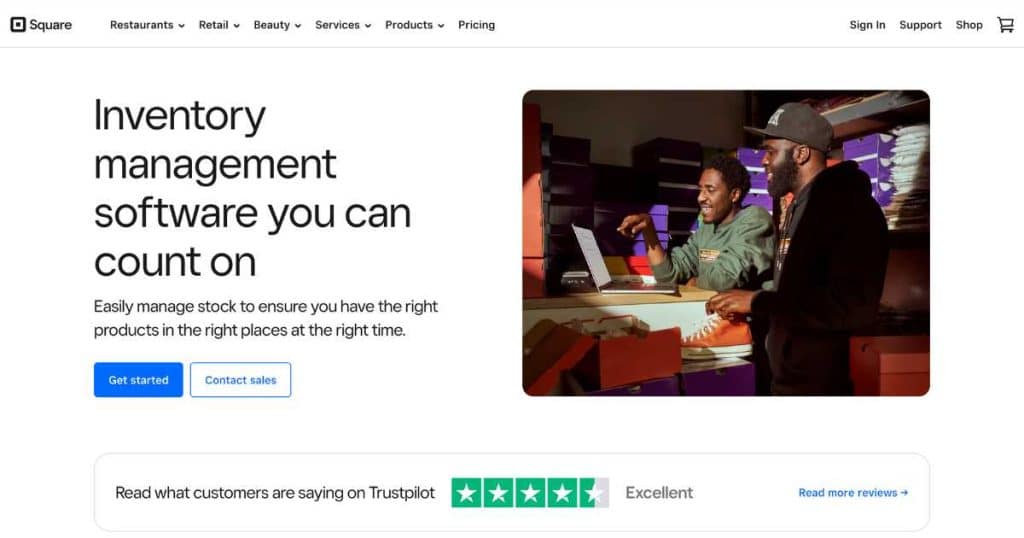Inventory management software for small businesses is a crucial tool that can revolutionize your operations, empowering you to streamline processes, reduce costs, and enhance customer satisfaction. This comprehensive guide will delve into the key features, benefits, and implementation strategies of inventory management software, providing you with the knowledge you need to make informed decisions for your business.
From understanding the essential features that small businesses should look for to exploring the latest trends shaping the industry, this guide will equip you with the knowledge and insights you need to leverage inventory management software effectively. Get ready to unlock the potential of your small business and take your inventory management to the next level.
Key Features of Inventory Management Software for Small Businesses

For small businesses, effective inventory management is crucial for streamlining operations, minimizing costs, and enhancing customer satisfaction. Inventory management software offers a comprehensive solution to these challenges, providing essential features tailored to the unique needs of small businesses.
When selecting inventory management software, small businesses should prioritize features that align with their specific requirements and operational processes. Key features to consider include:
Inventory Tracking
Accurate inventory tracking is the cornerstone of effective inventory management. The software should provide real-time visibility into inventory levels, enabling businesses to track stock levels across multiple locations, warehouses, or channels.
- Benefits of accurate inventory tracking include:
- Prevention of stockouts and overstocking
- Optimization of inventory levels to meet demand
- Reduction of inventory shrinkage and losses
Order Management
Efficient order management is essential for fulfilling customer orders promptly and accurately. The software should streamline the order processing workflow, from receiving orders to shipping and tracking.
- Key features of order management include:
- Automated order processing and fulfillment
- Real-time order status updates for customers
- Integration with shipping carriers for seamless order delivery
Reporting
Robust reporting capabilities provide valuable insights into inventory performance and trends. The software should generate customizable reports that help businesses analyze inventory data, identify patterns, and make informed decisions.
- Examples of useful reports include:
- Inventory turnover reports
- Stock level reports
- Sales and demand reports
By leveraging these key features, small businesses can streamline their inventory management processes, improve operational efficiency, and enhance customer satisfaction.
Benefits of Using Inventory Management Software
Inventory management software provides numerous advantages for small businesses, helping them streamline operations, reduce costs, and improve customer satisfaction.
By automating inventory tracking, businesses can gain real-time visibility into their stock levels, eliminating the risk of overstocking or understocking. This optimized inventory management leads to reduced waste, improved cash flow, and increased efficiency.
Enhanced Efficiency
- Automates inventory tracking, reducing manual labor and human errors.
- Provides real-time visibility into stock levels, enabling quick decision-making.
- Streamlines ordering and reordering processes, saving time and effort.
Reduced Costs
- Minimizes overstocking and understocking, reducing inventory holding costs.
- Optimizes purchasing decisions, leading to better pricing and reduced procurement expenses.
- Automates inventory tracking, eliminating the need for additional staff or resources.
Improved Customer Satisfaction
- Ensures accurate inventory counts, reducing the likelihood of stockouts and backorders.
- Provides real-time updates on inventory availability, allowing businesses to fulfill orders promptly.
- Enhances communication with customers regarding order status and delivery times.
Case Study: Small Business Success with Inventory Management Software
ABC Widgets, a small business specializing in manufacturing and distributing widgets, implemented inventory management software. Within six months, they reported a 25% reduction in inventory holding costs, a 15% increase in order fulfillment accuracy, and a 10% improvement in customer satisfaction.
Choosing the Right Inventory Management Software: Inventory Management Software For Small Business
Selecting the right inventory management software is crucial for small businesses. Here’s a guide to help you make an informed decision.
Factors to consider include business size, industry, and budget. Small businesses with limited inventory needs may opt for basic software, while those with complex operations require more advanced features.
Compare Different Software Options
Consider the following table comparing different inventory management software options:
| Software | Key Features | Pricing |
|---|---|---|
| ABC Inventory | – Barcode scanning
|
$99/month |
| XYZ Inventory | – Purchase order management
|
$199/month |
| LMN Inventory | – Inventory forecasting
|
$299/month |
Implementing Inventory Management Software

Implementing inventory management software in a small business is crucial for optimizing inventory operations and streamlining business processes. Here are the key steps involved:
Data Migration, Inventory management software for small business
Data migration involves transferring existing inventory data from legacy systems or spreadsheets into the new software. It’s important to ensure accuracy and completeness during this process to maintain data integrity.
Training
Adequate training is essential for employees to become familiar with the software’s features and functionalities. Training should cover all aspects of the software, from basic navigation to advanced inventory management techniques.
Ongoing Support
Ongoing support from the software vendor is crucial to ensure smooth operations. This includes technical assistance, software updates, and access to support resources to address any issues that may arise during implementation or future use.
Case Studies of Successful Inventory Management

Small businesses across various industries have experienced significant improvements in their inventory management practices by implementing inventory management software. Here are a few notable case studies:
Example 1: E-commerce Retailer
An online retailer specializing in home goods struggled with manual inventory tracking, leading to frequent stockouts and overstocking. After implementing inventory management software, they gained real-time visibility into their inventory levels, streamlined order fulfillment, and reduced inventory carrying costs by 20%.
“The software has been a game-changer for our business. We can now make informed decisions based on accurate inventory data, resulting in increased customer satisfaction and reduced waste.”
– Business Owner
Example 2: Manufacturing Company
A small manufacturing company faced challenges in managing inventory across multiple warehouses and production lines. The software implementation enabled them to centralize inventory data, optimize production planning, and improve inventory turnover by 35%. This led to reduced lead times and increased production efficiency.
“The inventory management software has given us a clear picture of our inventory flow. We can now identify bottlenecks and optimize our operations, leading to significant cost savings.”
– Production Manager
Emerging Trends in Inventory Management
The landscape of inventory management is continuously evolving, driven by technological advancements and changing business needs. Small businesses can leverage these trends to streamline their operations and gain a competitive edge.
One significant trend is the rise of cloud-based inventory management software. This technology offers several advantages, including accessibility from anywhere, real-time data updates, and scalability as businesses grow.
Artificial Intelligence (AI) and Machine Learning (ML)
AI and ML algorithms are revolutionizing inventory management by automating tasks, optimizing stock levels, and predicting demand patterns. These technologies enable businesses to make informed decisions, reduce waste, and improve overall efficiency.
Internet of Things (IoT)
IoT devices, such as RFID tags and sensors, are being integrated into inventory management systems. This technology provides real-time visibility into inventory levels, allowing businesses to track items throughout the supply chain and respond quickly to changes in demand.
Data Analytics
Data analytics plays a crucial role in modern inventory management. By analyzing data on inventory levels, sales trends, and customer behavior, businesses can identify patterns, optimize stock levels, and improve forecasting accuracy.
Closing Summary

In conclusion, inventory management software is an indispensable tool for small businesses looking to optimize their operations, reduce costs, and improve customer satisfaction. By carefully considering the factors discussed in this guide, you can choose the right software for your business and implement it successfully.
Embrace the latest trends and best practices to stay ahead of the curve and unlock the full potential of your inventory management system.
Remember, effective inventory management is not just about tracking stock levels; it’s about gaining real-time visibility into your supply chain, making informed decisions, and ultimately driving growth for your small business. Invest in inventory management software today and empower your business for success.
FAQs
What are the key features of inventory management software for small businesses?
Key features include inventory tracking, order management, reporting, purchase order management, and barcode scanning.
How can inventory management software benefit small businesses?
Benefits include improved efficiency, reduced costs, enhanced customer satisfaction, and better decision-making.
What factors should small businesses consider when choosing inventory management software?
Factors to consider include business size, industry, budget, and specific business needs.